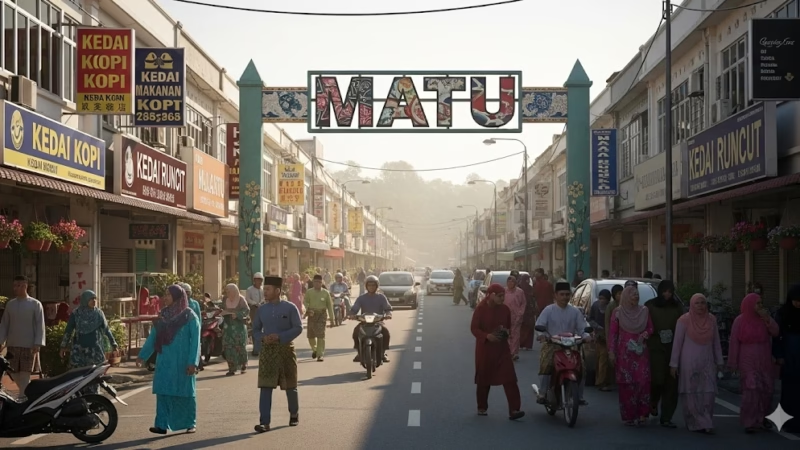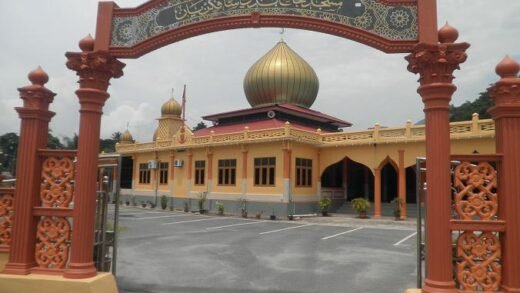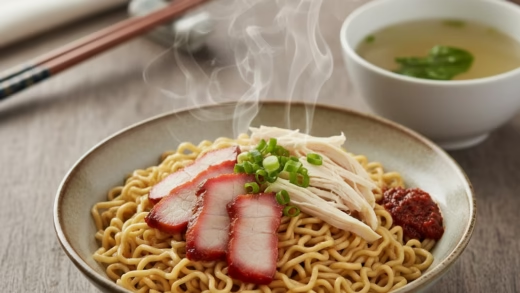Matu

Introduction – Discover the Charm of Matu
Nestled in the heart of Sarawak, Malaysia, Matu is a tranquil district that offers a unique blend of natural beauty, rich culture, and authentic local experiences. Often overlooked by mainstream tourism, Matu provides a serene escape for travelers seeking to immerse themselves in the authentic Bornean lifestyle.
Location & Accessibility – Getting to Matu
Matu is located approximately 150 kilometers northeast of Sibu, Sarawak, and about 300 kilometers southwest of Kuching, the state capital. The district is accessible by road, with well-maintained highways connecting it to nearby towns. While there are no direct flights into Matu, travelers can fly into Sibu or Kuching and continue their journey by car or bus. The drive from Sibu to Matu takes around 3 to 4 hours, offering scenic views of the Malaysian countryside along the way.
History & Background – A Glimpse into Matu’s Past
Matu’s history is deeply intertwined with the Melanau people, an indigenous group known for their unique longhouses and rich cultural heritage. The district’s name, “Matu,” is believed to be derived from the Melanau word for “hill,” reflecting the area’s topography. Historically, Matu was a significant center for the Melanau’s sago industry, which played a crucial role in their economy and daily life. Over time, Matu has evolved, embracing modernity while preserving its cultural roots. Today, it stands as a testament to the harmonious blend of tradition and progress.
Local Lifestyle & Culture – Traditions That Endure
Life in Matu is characterized by a close-knit community where traditions are cherished and passed down through generations. The Melanau people celebrate various festivals, with the most notable being the “Kaul Festival,” a traditional ritual to honor spirits and seek blessings for a bountiful harvest. This festival, marked by dances, music, and offerings, provides visitors with a unique insight into the spiritual and cultural practices of the Melanau. The district is predominantly Malay-speaking, with many locals also conversant in Iban and English.
Attractions & Things to Do – Exploring Matu’s Charms
Top Attractions
- Rumah Panjang Melanau Kampung Sok: Experience the traditional longhouse lifestyle of the Melanau people.
- Masjid Hidayatullah Kampung Jemoreng Matu: A beautiful mosque that reflects the Islamic heritage of the region.
- Stadium Mini Daro: A local sports stadium that hosts community events and activities.
Activities & Experiences
- River Cruises: Embark on boat rides along the Batang Igan River to witness the serene landscapes and spot wildlife.
- Fishing Expeditions: Join local fishermen for a day of traditional fishing techniques.
- Cultural Workshops: Participate in workshops to learn Melanau crafts, dances, and cooking.
Food & Local Cuisine – A Taste of Matu
Matu’s culinary scene is a delightful fusion of Melanau, Malay, and Borneo flavors. Must-try dishes include:
- Sago Pudding: A traditional Melanau dessert made from sago starch, often served with coconut milk.
- Ikan Bakar: Grilled fish marinated in local spices, a popular dish along the coast.
- Laksa Sarawak: A spicy noodle soup with a rich, aromatic broth.
Local eateries and roadside stalls offer these delicacies, providing an authentic taste of Matu’s culinary heritage.
Accommodation Options – Where to Stay in Matu
While Matu is not a major tourist hub, it offers a range of accommodations to suit different preferences:
- Budget: Simple guesthouses and homestays that offer basic amenities and a chance to experience local hospitality.
- Mid-Range: Comfortable hotels with modern facilities, providing a balance between cost and comfort.
- Unique Stays: Experience staying in a traditional Melanau longhouse, offering an immersive cultural experience.
Shopping & Souvenirs – Bringing Matu Home
Matu’s markets are vibrant and filled with local products:
- Handicrafts: Wooden carvings, woven baskets, and traditional textiles.
- Sago Products: Sago flour and sago-based snacks, reflecting the district’s heritage.
- Local Spices: Aromatic spices used in Borneo’s cuisine, perfect for culinary enthusiasts.
The weekly markets in Matu Town are ideal for purchasing these souvenirs.
Nearby Places to Visit – Exploring the Surroundings
While in Matu, consider visiting these nearby attractions:
- Bako National Park: Located near Kuching, this park is known for its diverse ecosystems and wildlife.
- Kampung Budaya Sarawak: A cultural village showcasing the traditions of Sarawak’s indigenous groups.
- Damai Beach: A serene beach destination for relaxation and water activities.
Travel Tips – Making the Most of Your Visit
- Best Time to Visit: The dry season, from March to October, is ideal for outdoor activities.
- Safety: Matu is generally safe for travelers; however, it’s advisable to take standard precautions.
- Transport Tips: Public transportation is limited; renting a car or hiring a local driver is recommended for exploring the area.
- Cultural Etiquette: Dress modestly, especially when visiting religious sites, and always ask for permission before taking photographs of people.
Why Visit Matu
Matu offers a unique blend of natural beauty, cultural richness, and authentic experiences. Its serene environment, coupled with the warmth of its people, makes it a perfect destination for travelers seeking a genuine Malaysian experience away from the usual tourist trails. Whether you’re exploring the traditional longhouses, savoring local delicacies, or immersing yourself in the Melanau culture, Matu promises a memorable journey.














Comments are closed.